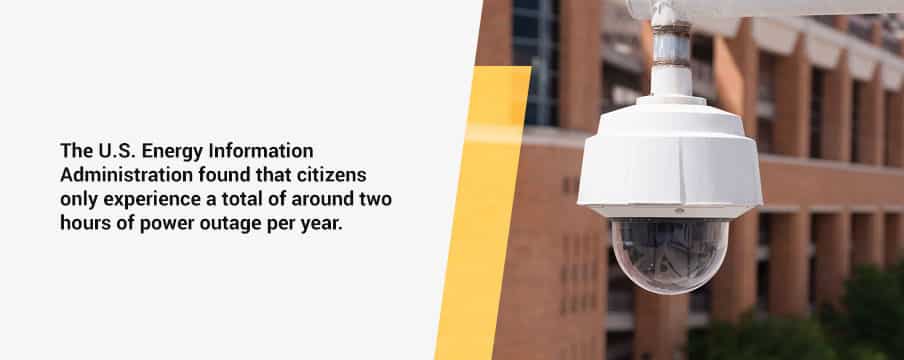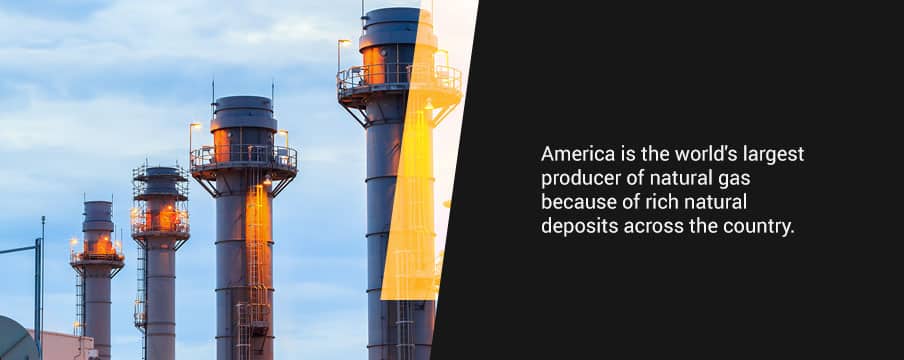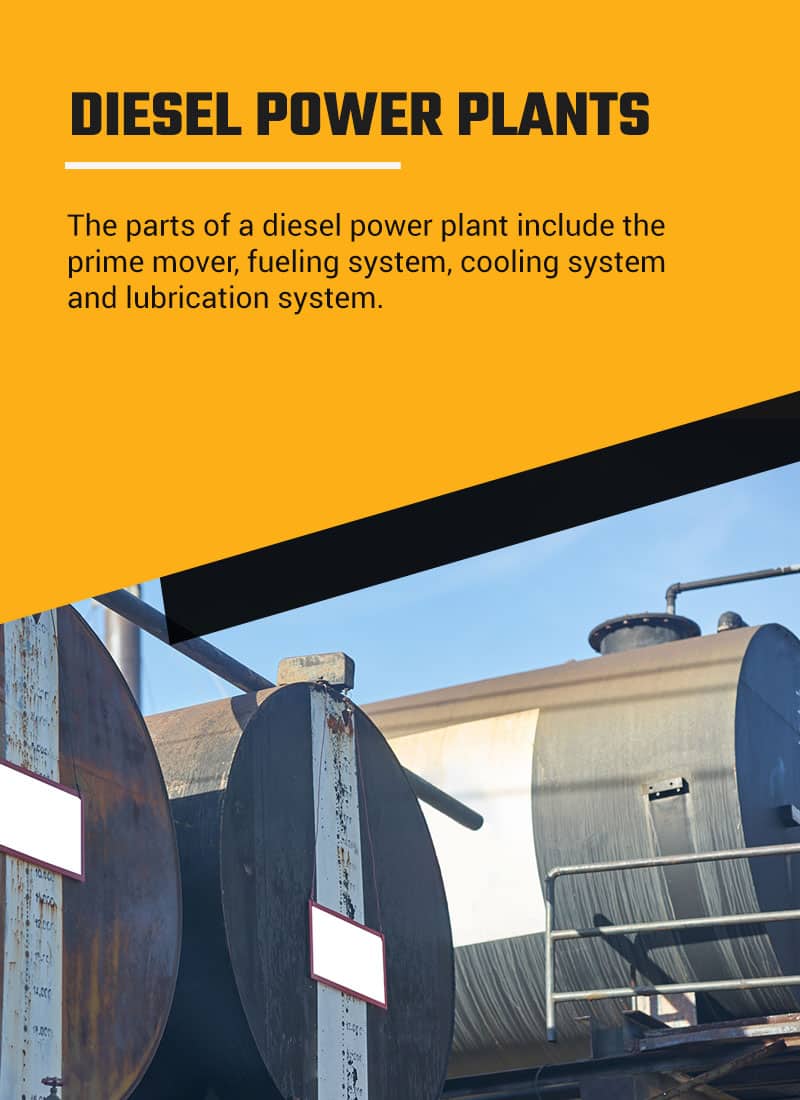The Importance of Power Plant Generators

Selecting a generator for a power plant is a significant decision — the role a generator plays at a power plant site is vital. Generators keep operations flowing smoothly during routine operations at electric power plants and serve as backup power sources to keep nuclear power plants running during a power outage.
Various power plants use diesel generators at their core to power communities with coal, natural gas, nuclear, hydro or other green energy sources. To fulfill the constant demand for energy, power plants require redundant power to ensure functions continue at all times and through any outage. Generators provide this redundant power and help keep personnel at power plants safe.
The Role of Power Plant Facility Generators
Many consumers take their access to energy for granted. The U.S. Energy Information Administration found that citizens only experience a total of around two hours of power outage per year. This issue may only amount to a brief disruption in some people’s days. For others, including emergency trauma centers and nursing homes, power interruptions can be much more severe.
A power failure could cause significant consequences for humans and the environment alike. A sudden loss of power could lead to anything from traffic accidents to failed medical procedures. In an outage, some power plants may leak radioactive material. Reliable energy is essential for maintaining safe, accident-free facilities.
Knowing the significance of the service they provide, power plants need contingency plans in place so they can restore power quickly and safely and avoid the consequences of an extended interruption. Backup emergency generators are one of the most efficient ways to ensure a fast return to production.
Many power plant managers choose diesel backup generators. Diesel generators offer several advantages when compared with natural gas generators. For example, a natural disaster like a hurricane or earthquake could disrupt natural gas transmission lines buried in the ground. If transmission pipes break, it could lead to a fire or explosion. Companies sometimes have to turn off a natural gas generator for safety reasons. However, this could mean it takes longer to restore power.
Diesel generators have several other benefits. According to the Alternative Fuels Data Center, diesel produces more energy output than natural gas, per volume. Diesel is also a somewhat safer option because it is less combustible. For example, standard low-sulfur diesel has a flashpoint of 165 degrees Fahrenheit, while compressed natural gas could ignite at negative 300 degrees Fahrenheit. Natural gas prices may also increase during shortages or emergencies, whereas these factors affect diesel to a lesser degree.
Various power plants have different usages for backup generators. Typical uses of diesel generators at power plants include the following.

Generators at Nuclear Power Plants
In 2020, nuclear power plants were responsible for 19.7% of the electricity generated in the U.S. These plants are a significant source of global energy production, generating about 10% of the entire world’s electricity. Nuclear power plants use nuclear fission and steam to supply essential power to residential areas, businesses, factories and hospitals. Power plant operators know that maintaining a consistent output of energy is vital.
Independent, redundant power options, each of which can run the plant by itself in the event of a loss of off-site power, are critical for ensuring safety at nuclear power plants and in the surrounding environment. Emergency diesel generators are the most frequently used option for supplying emergency power to nuclear plants. Many facilities choose diesel generators because federal regulations state that emergency power sources must work continuously until regular power comes back online. They must also cope with two simultaneous crises — a loss of off-site power and an accident.
Emergency power must have stamina. It also has to kick in quickly. The Nuclear Regulatory Commission states that emergency power generators should ideally start working within 10 seconds of a power loss. This regulation ensures a sufficient margin of safety for preventing reactor core damage.
Emergency generators must meet additional requirements for protecting personnel found in the National Fire Protection Association’s Life Safety Code. The NFPA requires emergency generators to comply with the following standards.
- Power restoration within 10 seconds: To meet regulations, emergency generators should restore power to safety systems like smoke alarms, elevators, exit lighting and fire alarms within 10 seconds.
- Stand-alone operation: To fulfill NFPA requirements, an emergency generator should operate independently, without needing another power source. Emergency generators must have independent panels and switches.
Diesel generators meet these requirements for reliability and power output better than most other types of generators. They can handle operating under low loads while a nuclear reactor is offline and then be ready to take over a full load should the need arise. They can also withstand atypical climate conditions and seismic events that can disrupt the power grid connection.
Engineers design diesel power plant generators to be dependable enough to serve as the first line of defense in a loss of off-site power. When the primary power source fails, whether because of a natural disaster or a system malfunction, an emergency diesel generator kicks in to provide power to components to ensure a safe reactor shutdown. One of the primary ways it accomplishes this is by sustaining the reactor cooling system, which reduces the decay heat produced in a shutdown that could release radioactive material if mismanaged. A generator also keeps other services in the power plant running, like lighting, ventilation and system control.
Coal, Natural Gas and Oil-Fired Power Plants
Many power plants burn fuels like natural gas, oil and coal to generate power. These fossil fuel power plants use non-renewable resources. Fossil fuel power plants must first mine or drill their energy sources from the earth, then either burn them for electricity or refine them to make fuel for transportation or heating.
America is the world’s largest producer of natural gas because of rich natural deposits across the country. Despite ongoing efforts to shift America’s energy consumption to renewable sources, fossil fuels still play a critical role — natural gas and coal are in the top three sources for the nation’s power, so providing plants with emergency power makes an impact.
As a whole, natural gas-fired power plants are usually more efficient than coal-fired plants because they lose less energy in conversion. All kinds of fossil fuel power plants use generators to maintain better efficiency levels and eliminate downtime during an outage. If the primary power source is unavailable, these power plants keep generators on hand to power essential functions — such as critical pumps, fans, hydraulic units, battery chargers and more. Typically, these plants will install one emergency generator per unit that should automatically kick in when the under-voltage relay is active. This function begins working to protect the system from a drop in voltage or other sorts of malfunction.

Backup Power at Hydro Generation Plants
Until 2019, hydropower was the largest source of renewable energy production. While wind energy is now at the top, hydropower still produces 7.3% of U.S. utility-scale electricity. Because hydroelectricity plants harness the water flowing through rivers and streams, energy generation depends heavily on the flow of the water cycle. The greater the volume of precipitation an area receives, the more energy a hydropower plant can produce.
At hydro generation plants, generators have two primary functions, one of which is emergency backup for generation units. Power plants divert water flow through a penstock and into hydro turbines, which spin to power electricity generators. These generators then transmit power throughout the area. The water either gets released to continue on its way through the water cycle or transferred to another reservoir for reuse. If the power plant generators fail because of a power shortage, the plant cannot channel the water. Backup generators can keep water flow productive by returning the plant to its regular functions.
Diesel generators also provide backup power for spillway gates that help prevent flooding. In a reservoir, a dam controls a river. However, in seasons of greater precipitation, the dam may flood, damaging the hydro turbines and preventing efficient hydropower production. These floodwaters are sometimes inevitable, so it’s essential to have a method for controlling them. Spillways prevent the dam from overtopping by channeling floodwaters into a terminal. Controlled spillways use electronic gates that can raise or lower depending on the level of floodwaters. Backup generators keep these gates functioning in an outage so the spillway can continue protecting components like hydro turbines.
Backup Power at Diesel Energy Plants
Diesel is a powerful energy source used in many applications across industries, from transportation to manufacturing. Electric power plants use diesel-fueled generators for energy production to generate power, diesel plants convert diesel’s chemical energy into thermal energy through an internal combustion process, which involves heat and air compression. The combustion process creates a mechanical action, rotating a crank that produces electricity.
Diesel energy plants are usually emergency or supplementary power sources instead of primary power sources. Even when used for emergency power, diesel energy plants must have contingency plans to maintain production in a power interruption. Since diesel burns up during production, plants may need to keep backup fuel supplies to support their emergency generator.
In most situations, diesel plants create backup energy rather than serving as the primary power source. During periods of high electricity demand, such as a widespread blackout, using diesel energy plants can reduce the strain on the power grid. Typical applications include rural areas where other energy sources are scarce.
Generators for Landfill Gas-to-Energy Plants
Landfill gas-to-energy plants create sustainable energy by using methane and other gases found at landfills. Landfill gas is a natural byproduct of decomposition in landfills, and represents a considerable opportunity for energy production. According to the Environmental Protection Agency, in 2019, landfills generated approximately the same amount of methane as the carbon dioxide emitted by nearly 12 million homes in one year. Landfill gas-to-energy plants capture these gases and convert them into energy.
Landfill gas-to-energy plants consist of a system of wells drilled into the landfill, connected by a series of pipes. The wells capture gas and filter out condensation and other byproducts. The EPA estimates that LFGTE plants capture 60 to 90% of the methane produced in landfills. The gas then undergoes processing for use in manufacturing systems or electricity generation using turbines. With advanced processing, landfill gas can even be pure enough to inject into a natural gas pipeline.
These types of power plants are often diesel plants with generators in place for emergencies. The EPA found that approximately 70% of LGTE plants in the U.S. generate electricity. Another 17% of current LFGTE projects use medium-Btu fuel directly in boilers or arts and crafts applications. The remainder converts gas into renewable natural gas, which companies can use in place of several kinds of natural gas. In case of a power outage, backup generators ensure these essential services can continue.
Diesel Power Plants
Typically found in remote locations such as Alaska, diesel power plants are often independent of a power grid. They are helpful in areas where no power grid exists and businesses depend on local power generation and fuel storage. This remoteness means these plants rely heavily on the use of diesel generators for power generation. It also means they must store large amounts of diesel nearby as part of a contingency plan for a power outage. This fuel is on standby so the generator powering the plant can have sufficient supply during an extended outage.
The parts of a diesel power plant include the prime mover, fueling system, cooling system and lubrication system. The cooling system is crucial for maintaining the right system temperature. Cooling systems transfer waste heat out away from the engine. Keeping system parts cool ensures that the plant runs efficiently. If the plant overheats because of a loss of power to the cooling system, it could damage some parts. The plant could also experience dangerous fires or explosions.
Though diesel power plant generators are most often for backup scenarios, they can also be primary power sources. In this situation, it is even more critical to have a good store of diesel fuel handy.

Substations and Switchyards
Plants rely on substations and switchyards to distribute generated power. Many components of substations and switchyards rely on a steady source of power, such as transformers and circuit breakers. At these locations, diesel generators ensure operations continue to function without a hitch in a power outage.
While they perform much the same function, substations and switchyards may require different energy levels because of their construction. There are multiple kinds of substations along the path from a generation plant to the users. Step-up transmission substations rely on large electrical transformers to convert the power plant’s voltage into high-voltage energy for transmission away from the plant and into businesses and homes. Step-down and distribution substations are closer to consumers and transform energy into lower voltages that are safe for use.
Switchyards also connect generation facilities with users, but they lack transformers. Switchyards operate on a single voltage level because they do not change energy into higher or lower voltages. Some substations and switchyards are small and may only have one transformer along with its switches. Others are huge and require energy to power several transformers. These facilities also regulate the voltage and eliminate lightning and other unwanted currents from the system.
Power plants use generators to maintain a continual energy supply to these pieces of equipment, thus connecting to customers.
Black Start Processes and Testing
A black start is a procedure electric companies must carry out in case of a total grid blackout. It involves the use of diesel generators to restore power to consumers. The term arises from a power failure in Manhattan in 2003, in which 21 power plants lost power within three minutes. Operators found their emergency generators were not as reliable as they had thought, so they developed a contingency plan to ensure generators could handle such a drastic outage in the future.
The black start process involves preparing for a complete or partial shutdown to restore the power station without relying on energy transmission from an external network. In Manhattan, no nearby operating networks could transmit power. Black start testing aims to eliminate that issue by implementing procedures to swiftly restore power.
To complete testing, transmission operators must create a restoration plan for use in an outage. The plan must include procedures for restoring the interconnection between transmission lines and outline the steps to take. Transmission operators must also identify switch requirements and voltage limitations during power restoration. Consistent black start tests ensure the emergency generator starts on time and supplies the amount of energy needed.
For the black start process, just as with regular power plant operations, a reliable and efficient emergency generator is vital.
Industrial Generator Sales and Service From Woodstock Power
Power plants need generators to prepare for power outages and create contingency plans to handle them confidently. Maintaining a reliable industrial emergency generator is essential to gaining peace of mind about the potential of a power interruption.
Woodstock Power Company understands the value of reliable backup energy. Our mission is to help businesses assess their generator needs with guidance from our industry experts to provide consistent power even in adverse situations. We will help you determine the generator that best fits your facility. Our extensive selection of new and used generators contains plenty of options for all your needs.
At Woodstock Power Company, we also provide comprehensive support throughout choosing a generator for your power company. Contact our helpful support staff today or call us at 610-658-3242. We would love to partner with you.


